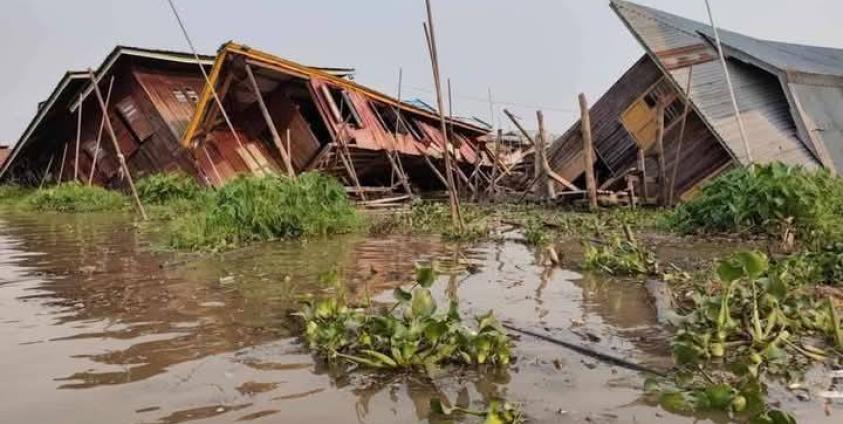Inle Lake in southern Shan State’s Nyaungshwe Township was one of the areas hardest hit by the 28 March 2025 magnitude 7.7 earthquake.
Many houses at Inle are built on stilts over the lake and the earthquake caused them to collapse and sink into the lake, which hindered rescue efforts.
Ma Ivy Nway Oo, a volunteer rescue worker working at Inle Lake said: “Search and rescue work involves pulling bodies from the rubble, but when entire houses are submerged in water, it makes the task much harder. If the houses have just collapsed on land, we can clear the debris and still have a chance of finding survivors. But when they’re underwater, it's almost impossible to find anyone alive. Right now, we’re focusing on recovering the bodies from the wreckage as best as we can.”
90 deaths have so far been confirmed in villages around Inle Lake, according to rescue workers who spoke to NMG. Most victims were entire families who had drowned in their houses when they collapsed into the water.
Ma Ivy Nway Oo explained that it is impossible to use land-based heavy machinery to clear rubble in the water, so rescue teams are having to use boats to clear the debris.
She said: “Life jackets and diving equipment should definitely be included in the list of aid materials needed for the Inle region. The manpower for rescue work is also becoming limited since it has to be done in the water. But we’re still doing our best to manage and help as much as we can.”
Whilst the central regions of Myanmar were the areas the hardest hit by the deadly 28 March earthquake, Inle Lake was also a major disaster zone. The earthquake destroyed or damaged 2,883 houses in and around the Lake. Residents who lost their homes are now seeking refuge in the monasteries that remain standing and in tents pitched on open ground.
People in the Inle Lake area urgently need food, drinking water, clothing, shelter, menstrual products, medicine, and solar-powered light bulbs, according to aid workers helping them.
The Pa'O Youth Organisation (PYO) issued a statement urging donors in the surrounding areas to use boats to transport relief materials to the earthquake-affected communities, rather than simply stockpiling them on the shore. It also urged donors to connect with local social aid groups to ensure that all aid is effectively distributed.
Despite the widespread destruction around Inle Lake no international teams or external aid has reached the area. Instead, local aid and youth groups have stepped up to lead the rescue efforts.
Inle Lake's economy relies heavily on tourism, and there are growing concerns that the earthquake will lead to a decline in visitors. It could also impact on the residents other main sources of income, fishing and agriculture.
According to junta reports, as of 2 April, 2,886 people had died, a further 4,639 had been injured and 373 were missing, as a result of the earthquake.







